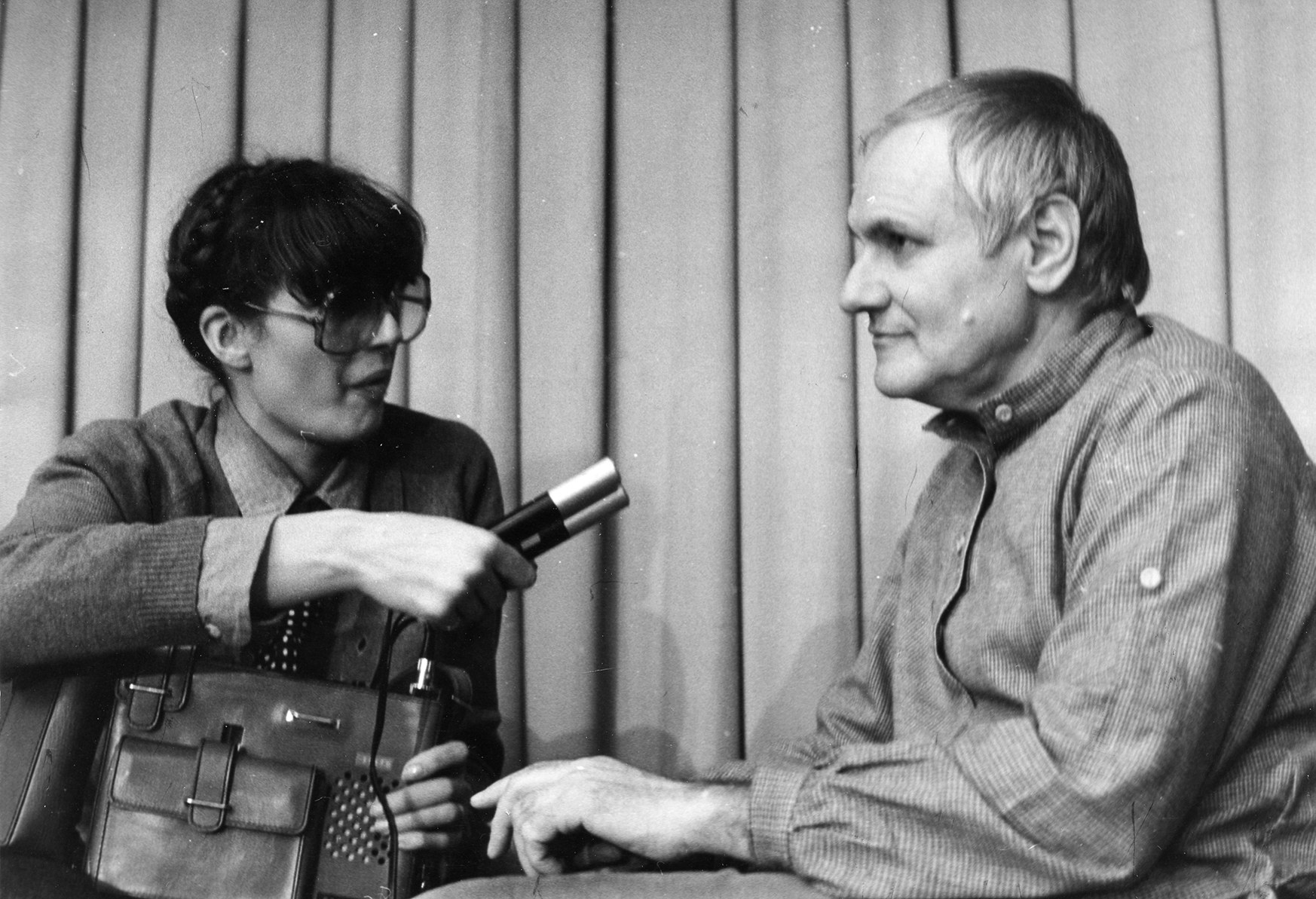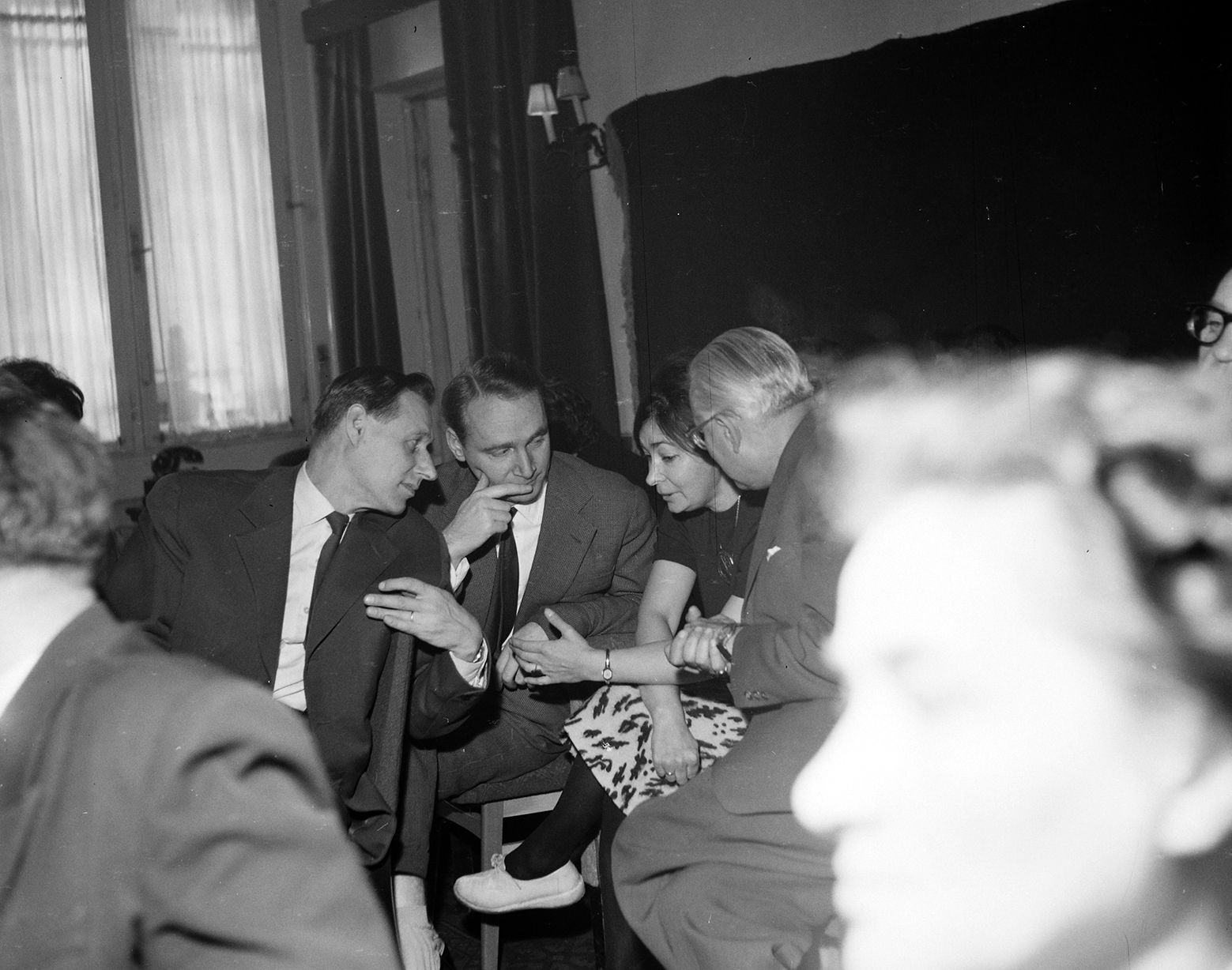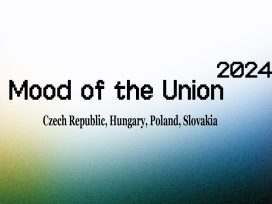Our daily nation
Even though socialist internationalism was the official ideology in communist Hungary, popular media at the time was teaming with nationalist narratives, hidden in plain sight. What does this contradiction explain about today’s politics?
One of the most distressing tendencies in contemporary Eastern European political and public discourse is the rapid spread of violent nationalism. It is a common assumption in social sciences that the suppression of nationalism during the period of state socialisms played a crucial part in the velvet or ‘colourless’ revolutions that took place across the region in 1989. In fact, many argue that the explosion of formerly repressed nationalistic attitudes mirrored the flourishing of the nation state itself in mid-nineteenth-century Europe. This has also brought back gestures of nativism, homogenization and exclusion in (nationalist) politics, in social imaginary and in everyday life as well.
While there was a short moment of optimism after the transition process, which promised a globalized, trans or at least supranational European ideal, it was in fact the unsuccessful post-transition period fuelling a nationalist sentiment that reshaped right-wing political tendencies, and thus power relations. How had the many forms of banal nationalism remained intact during the decades of socialist internationalism? How has a nationalist political narrative since become the most enduring in Eastern Europe? Why does it attract so many misunderstandings and conspiracy theories?
To answer these questions, we must rethink the very categories of ‘nationalism’ and ‘internationalism’, or more specifically the dualism between them. The dominant conceptual vocabularies define the coexistence of nationalism and internationalism as a ‘paradox’ – a contradiction in terms. It is not possible, I argue, to understand contemporary political processes this way. Thinking about the intersection of political process and popular media, however, can offer us a more nuanced view of social change in a historical context.
In this article, I will show how television history can reveal a greater complexity of ideological dynamics than the black-and-white vocabulary of political discourse. I draw here on the case study of the 1978 television series Abigail (Abigél) – one of the most popular Hungarian series to date, which infused a seemingly anti-fascist coming-of-age youth drama with nationalist symbolism.
As established widely in Eastern European Media Studies, television in the region served as a bridge, at the time under discussion, between audiences, entertainers, television personnel and political authorities, but it also mediated between – in popular terms – Eastern and Western cultural trends, and official and vernacular branches of cultural memory.
Hungarian Popular Media: policy and ideology
Rather than positing nationalistic-chauvinist attitudes as a response to socialist-era repression, this article argues instead that nationalism played a key part in the collapse of socialism precisely because it was not excluded from the socialist cultural milieu, remaining a prominent modality of cultural identity throughout the regime. This is evident if we attend to popular media.
In this article, I refer to the final three decades of state socialism, or ‘late socialism’, in Hungary, also known as the Kádár-era, named after Party leader János Kádár. Coming into power after the repression of the 1956 revolution, Kádár and his inner political circle was able to negotiate a status quo with a relatively passive Hungarian society. Popular culture was an obvious medium of ideological indoctrination and edutainment – in this case, an effective tool of depoliticization and the boosting of national pride 1.
Television was perhaps the most important cultural medium during the Cold War for regulating and defining popular and collective memory, everyday routines, intimacies and attitudes, which makes it a perfect archive of cultural, political and social processes. This was true on both sides of the Iron Curtain 2. In Hungary, socialist television encouraged normative representational tendencies involving a decisive presence of national historical narratives, supporting the dissemination of banal nationalism in everyday culture. This kind of content acted as a safety valve for the regime by strengthening a cultural status quo between authorities and viewers that avoided the cultural taboos of the system – notably the 1956 uprising, antisemitism and revisionism.

Miklós Jancsó being interviewed by Hungarian radio in 1980. Image via Fortepan.
Nationalism and Internationalism: not exactly a contradiction
Socialist popular culture, socialist television culture and post-socialist nostalgia have all drawn a great deal of scholarly interest in recent years 3. Field studies and narrative, textual and discourse analyses have shown that socialist popular culture was not necessarily the opposite of capitalist popular culture but rather a mode of modernism that took form in similar structures to its Western counterpart. Nevertheless, mirroring broader geopolitical tendencies, the hierarchic relation between Western and Eastern media studies has remained intact, and as such we see a generalized use of Western knowledge paradigms. The growing scholarship, for instance, is often embedded in local cultures and built on the principle of the nation state. Relations between nationalism, socialism and post-socialism remain somewhat underdeveloped 4.
During state socialism, Hungarian Television (MTV) produced hundreds of series, teleplays and television movies. The most overrepresented genre among them was historical fiction. One of the most popular Hungarian television series to date is called A Tenkes kapitánya (The Captain of the Tenkes, dir. Tamás Fejér, 1964), a historical series set in the eighteenth century during the ‘kuruc’ uprising, led by Ferenc Rákóczi, against the Habsburg Empire. Its outlaw heroes, Máté Eke and Jakab Buga, became Hungary’s best-known fictional television figures as they represented synecdochical symbols of both resistance and national identity.
Adaptations of nineteenth-century historical novels were also extremely popular during the 1960s and 1970s. The most prominent example is the oeuvre of Mór Jókai, a nineteenth-century Hungarian writer whose nationalist narratives defined the social imaginary of the formation of the nation state and the 1848 revolution, and are still mandatory readings in Hungarian elementary schools. Most people, however, access Jókai’s novels through their film adaptations. These high-budget productions – for instance, A kőszívű ember fiai (The Baron’s Sons, 1965); Egy magyar nábob (A Hungarian Nabob, 1966); and Kárpáthy Zoltán (Zoltán Kárpáthy, 1966) – were directed by acclaimed Hungarian director Zoltán Várkonyi and featured the most popular actors of the era.
A similar strategy of historical allegorizing for contemporary ideology appeared in high culture too, including arthouse cinema. Perhaps the most famous example is the work of Hungarian director Miklós Jancsó, who directed several movies during the 1960s in a late-nineteenth or early-twentieth-century setting, such as Szegénylegények (The Round-Up 1965); Csend és kiáltás (Silence and Shout, 1968) or Még kér a nép (Red Psalm, 1972). The politics of these representations are bound up in complex relations between makers, institutions, audiences and political powerhouses. What they clearly show, however, is a close relationship between the weakening internationalist rhetoric of socialist authorities and vernacular branches of nationalism.
Contrary to popular belief, censorship was not universal in socialist television cultures, but varied from country to country, from a grim degree of censorship in Romania to its almost complete absence in Hungary and Yugoslavia. Television in late socialist Hungary didn’t operate so differently from how it did in Western countries. Sports programming, talent competitions, quiz shows and series were among the most popular genres of Hungarian television, even if historical dramas and historical adventure shows were the most significant of all 5. This mixed programming enabled nationalistic ideologies to lurk in the shadow of the seemingly internationalist ideology of socialism. It is a common understanding in television studies that nationalism is one of the core principles of television culture, and particularly public service media, which socialist television most closely resembled. In this context Hungary’s cultural taboos – irredentism and revisionism, antisemitism, the Treaty of Trianon and the 1956 uprising – were represented in a space of common interest. As I will argue, the presence of nationalist narratives in popular culture transformed cultural and political nationalism into an enduring Hungarian tendency.
Anti-Fascist Cult Television or Vehicle of Banal Nationalism: the curious case of Abigail
Magda Szabó is a well-known but often misinterpreted figure of twentieth-century Hungarian literature. She is one of the country’s most widely read authors: her novels are extremely popular among various social and age groups. She was also a very prolific author with more than fifty books written and published during her lifetime and posthumously. Despite this, she is almost invisible to literary professionals. While there are many magazine and newspaper articles about her life, very few volumes have been published in literary and cultural studies about her oeuvre.
Having been silenced while working as an elementary school teacher in the 1950s Stalinist period, Szabó became a celebrated, even diva-like writer in the time of late socialism, and an ally of György Aczél, the most influential executive of socialist cultural politics. She was allowed to travel abroad extensively and earned a great deal of money – both of which she treasured more than political independence. Her young adult novel Abigél, translated into English by Len Rix in 2020 as Abigail, is probably her most beloved book, read by several generations since it was originally published in 1970. One of the most popular Hungarian television series to date is the 1978 four-part adaptation of the book with the same title, directed by Éva Zsurzs. In what follows, I will argue that though ostensibly an antifascist coming-of-age story, the television series allowed nationalist and irredentist symbols to lurk in the public sphere. It was above all the narrative of a banal nationalism that would keep nationalistic ideas alive during the period of state socialism.
Set between 1943 and 1944, Abigail mixes genres: it is a coming-of-age story, an espionage thriller and an antifascist manifesto all at once. Though it is usually considered ‘light fiction’, it is also one of few Hungarian midcult novels, with a straightforward figural structure and a clear moral lesson. The protagonist, Georgina Vitay, nicknamed Gina, is the spoiled only daughter of an army general, a widower, who is – unbeknownst to Gina – one of the key figures of the Hungarian anti-fascist military resistance. In order to fulfil this role, he sends his daughter to a grim Protestant boarding school at the Eastern border of the country in a town named Árkod (a fictional analogue to Szabó’s hometown Debrecen).
Gina despises the school and her new classmates. She fights with her fellow students, rebels against her teachers, finds herself completely ostracized, and runs away. Caught and brought back, there is nothing for Gina to do except entrust her fate to the legendary Abigail – the name given to the classical statue of a woman with an urn that stands on the school’s grounds. If you’re in trouble, it is said amongst the students, leave a message with Abigail and help will be on its way. A crucial moment in the novel – also a symbolic one in Hungarian history – sees Gina’s father arrested by the Gestapo after the German occupation begins on 19 March 1944. Local members of the anti-German resistance must make a plan to help Gina escape from the Nazi allies, who are after her as a means of blackmailing her father. By the end of the novel Gina is safe and the war is almost over. It turns out that the local hero who saves Gina’s life (albeit in the name of the statue) is the clumsy Latin teacher, ridiculed by everyone in the school.
During the Second World War, Hungary was a member of the Axis forces, along with Italy and Nazi Germany. From the 1930s Hungarian politics and foreign policy became more and more nationalistic and revisionist, in response to both economic crisis and the Treaty of Trianon at the end of the First World War. In November 1938, the First Vienna Award transferred parts of southern Slovakia and Carpathian Ruthenia from Hungary to Czechoslovakia. In September 1940 the Second Vienna Award transferred the northern half of Transylvania. A significant proportion of territories lost in the Treaty of Trianon were restored, which was seen as a triumph of nationalistic politics. Popular and high culture, everyday customs and school curricula at that time were all equally interwoven with chauvinistic, revisionist ideology. It was compulsory to say prayers for the restored territories and Greater Hungary in every school in the country; irredentist songs were important elements of patriotic education. One of the best-known marching songs of the interwar period is ‘Transylvanian March’ (‘Erdélyi induló’). The lyrics of the song encourage people to ignore the ‘mock borders’ of the Trianon pact and to retake Transylvania.
By the end of the Second World War, however, all the restored territories were lost and Hungary became part of the Eastern bloc, eventually with a socialist and Soviet allied government. Formerly popular irredentist and nationalist content was forbidden, since socialism was based on the ideology of internationalism. The first public appearance of the ‘Transylvanian March’ was in the televised adaptation of Abigail. Indeed, this was the first time an interwar revisionist song appeared on national television. Since this was mandatory in public education during the war, the novel’s high school students sing the march in two scenes of the series. The series thus embedded irredentist and religious songs, along with Bible verses – neither particularly favoured during socialism – in the space of socialist television.
The antifascist framing of the show, and the likeable heroes of the underground resistance movement normalized the songs that were sung during the Second World War, as well as the monuments to Hungarian suffering (for instance the loss of its former territories) they had wreathed. Clearly neither Magda Szabó nor the creators of the television series meant to smuggle forbidden nationalisms onto the screens of socialist citizens. What the public appearance of these symbols, songs and attitudes did, however, was bring latent ideologies into popular consciousness, re-introducing certain historical modes of behaviour that had been virtually excluded from the public sphere. At work here is popular television’s assimilation of an anti-fascist coming-of-age story into the national memory system.

Magda Szabó talking to director Miklós Kováts. Image via Fortepan.
Historical narratives served as nationalism’s common space in cultural memory, as party officials and television professionals exploited the national character of television culture, creating invisible bounds between past and present. As with Abigail, historical television can harness the power of banal nationalism, a term popularized by social scientist Michael Billig. Strategies of banal nationalism juxtapose symbols, myths and extreme nationalist ideologies, normalizing the nation as a narrative form where it ought to be problematized. As Billig writes,
For this reason, the term banal nationalism is introduced to cover the ideological habits which enable the established nations [of the West] to be reproduced. It is argued that these habits are not removed from everyday life, as some observers have supposed. Daily, the nation is indicated, or ’flagged’, in the lives of its citizenry. Nationalism, far from being an intermittent mood in established nations, is the endemic condition. 6
In the introduction to his book, Billig cites the case of the Gulf War as an example of how mediated images of the war helped to frame it as a protection of ‘nationhood’, the nation being understood as an extension of culture and civilization. Representations of war develop the same rhetorical methodologies as those used in war itself: images of horror are normalized, which during late socialism included those of extreme nationalistic Hungarian behaviour during the Second World War. Banal nationalism finds agency in layers of everyday practice by no means less dangerous, or indeed performative, than overt political nationalism. The televised adaptation of Abigail serves as a case in point, shrouding contemporary chauvinistic attitudes in ‘history’ and nationalist symbols in antifascism.
Varga, B. ‘Transformations: Hungarian Popular Cinema in the 1950s’, in Ostrowska, D.-Pitassio, F.-Varga, Zs. (eds.) Popular Cinemas in East Central Europe: Film Cultures and Histories, London: I.B. Tauris, 2017, pp. 85–101.
See Mihelj, S.-Huxtable, S., From Media Systems to Media Cultures: Understanding Socialist Television, Cambridge: Cambridge UP, 2018; Gray, A. ‘Televised Remembering’, in Keightley, E.-Pickering, M. eds. Research Methods for Memory Studies. Edinburgh: Edinburgh University Press, 2013, pp.79-9; Péteri, Gy, ‘Nylon Curtain: Transnational And Transsystemic Tendencies in the Cultural Life of State-Socialist Russia and East-Central Europe’ Slavonica, Vol. 10, No. 2, 2004, pp. 113-123.
See, for instance, Imre, A., TV Socialism, London and Durham: Duke University Press, 2016; and Mihelj, S.-Huxtable, S., From Media Systems to Media Cultures, op. cit.
Verdery, K., ‘National Ideology Under Socialism’, in Polese, A. et al. (eds) Informal Nationalism after Communism: The Everyday Construction of Post-Socialist Identities, London, I. B. Tauris, 2018.
See in particular Imre, A., TV Socialism, op. cit, pp. 133–155.
Billig, M., Banal Nationalism, London: Sage, 1995, p. 7.
Published 9 June 2023
Original in English
First published by Eurozine
Contributed by ELTE Média © Veronika Hermann / ELTE Média / Eurozine
PDF/PRINTNewsletter
Subscribe to know what’s worth thinking about.
Related Articles

Prefiguring Europe’s future
Czech Republic, Hungary, Poland, Slovakia
Since the war in Ukraine, the Visegrád Four group no longer articulates a common voice in the EU. Even the illiberal alliance between Hungary and Poland has come to an end. Yet in various ways, the region still demonstrates to Europe the consequences of the loss of the political centre.

Pronatalism has become a populist vote winner for right-wing parties in Central and East European countries. Demographic imbalances, involving youth migration, ageing populations and immigration resistance, have sparked a series of baby-making policies. But are financial incentives in Hungary, Poland and Serbia enough to reverse the trend of decreasing birth rates?





